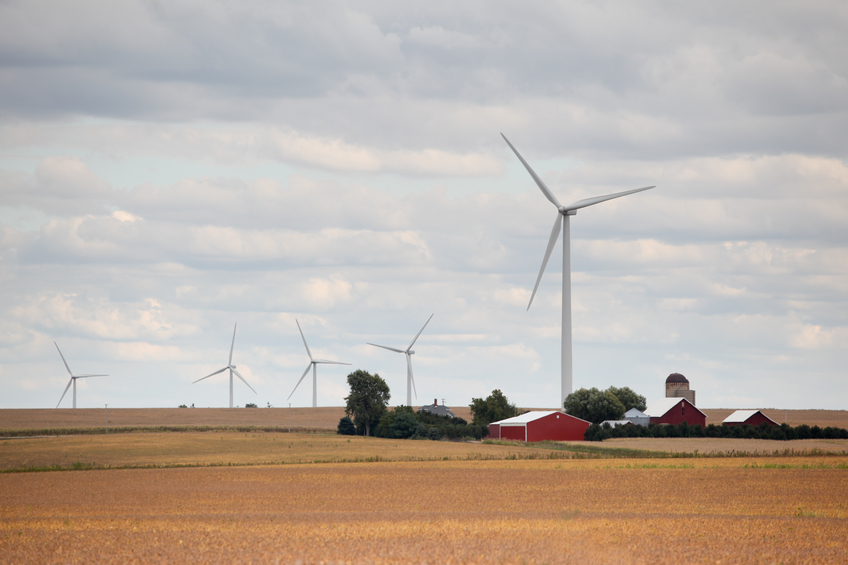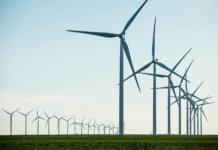Like a student growing up, wind has come a long way since its appearance on a school campus in Iowa more than a decade ago. Since then, wind at school has grown in both size and geographic reach.
Wind turbines at various educational facilities have graduated from their smaller kilowatt roots in a handful of districts to the several-hundred kilowatt or even megawatt class, and are starting to appear across the U.S.
And while many have been built with pedantic or exemplary motives – for teaching purposes or to promote environmental stewardship – there has been some serious coin collected to impress school officials and boards of directors.
Public school districts, private institutions, and colleges and universities across the country have embraced wind for a variety of reasons.
A combination of financial benefits, an opportunity for academic learning and environmental awareness has emerged since a 250 kW machine was installed in Iowa in the early 1990s.
Schools have taken varied approaches to the financial benefits they can gain from having a wind turbine on their campuses – often depending on the net-metering laws or the financial calculations derived from selling to the grid in a particular state. Some have decided to use the energy to directly supplement their electricity usage. Others have sold the electricity to the grid and reaped thousands annually to provide financial support to academic programs.
Portsmouth Abbey is such a school, with a single turbine going into operation earlier this year. Brother Joseph Byron, an instructor at the Benedictine boarding school on the Rhode Island coast, was the promoter of the initiative over the past two years.
‘In September of 2004, it really got going in earnest,’ says Byron.
A difference is the setting: a populated region in the East, where siting objections are likely to greet just about every project, however small. And in a flat coastal region of the Ocean State, the turbine is visible for miles.
Since the town of Portsmouth's zoning limit is 35 feet for structures, the visual impact was going to be immediate and potentially controversial. The tower sits at 164 feet high. But Byron says the school was forthright and open with the community, which came to enthusiastically support the project. The public schools in town are now investigating installation of their own turbines, in fact.
The Rhode Island Renewable Energy Fund kicked in a $450,000 grant, which was increased from an original commitment of $150,000, to help make the first wind project in the state viable.
A Vestas V47 660 kW turbine that cost $1.2 million to install is expected to operate for the next 25 years.
The turbine is expected to produce 1.2 million kWh of electricity a year – 40% of the school's needs – and save Portsmouth Abbey $100,000 a year. It is expected to pay back its costs in five to seven years.
‘We should be able to take advantage of the seasonal pattern,’ Byron explains.
With light winds in the summer coinciding with the school's vacation, proportionately more of the turbine's generation will occur when school is in session and energy demands are greater. Windlogics
Colleges and universities have also gotten into the act, with two colleges about 40 miles from the Minneapolis-St. Paul metropolitan area becoming wind energy rivals – of sorts.
Carleton College in Northfield, Minn., in September 2004 dedicated the first utility-scale turbine in the country owned by a college or university – a 1.65 MW Vestas machine.
‘What we've seen is pressure from the student body to promote sustainability for the university's facilities,’ says Bruce Andersen of RENew Northfield.
The college also sees an economic benefit. Its power is sold to the incumbent utility, Xcel Energy, earning it 3.3 cents/kWh under a Minnesota small wind tariff. The turbine also generates 1.5 cents/kWh from a state renewable energy payment incentive. Through state grants and the income it generates, the $1.8-million turbine is expected to be paid off in 10 to 12 years.
The college's mission statement includes a clause for the institution to ‘be a model of environmental stewardship.’
Across town, St. Olaf College is about to commission its own turbine, which is expected to produce about 30% of the school's electricity needs. It received a $1.5 million grant from the Xcel Energy Renewable Development Fund.
This is quite a growth spurt from the beginning of wind at school.
The Spirit Lake Community School District in Iowa started to explore developing the local wind resource in 1991. After a series of studies and the award of government grants, a 250 kW turbine was erected in 1993. It received a $139,000 grant from the U.S. Department of Energy and a $100,000 low-interest loan from the Iowa Department of Natural Resources.
Since low-interest loans were paid off in 1998, the district has earned $20,000 to $25,000 annually from sales of electricity back to the local utility.
A second 750 kW turbine was erected in 2001, which now powers many of the buildings in the district



